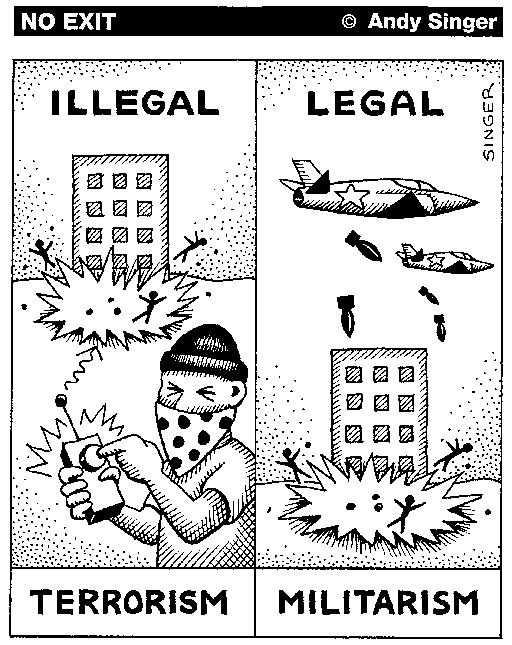4.2 What is terrorism?
The response to the 9/11 attacks seems in many ways to be unproblematic. It almost seems common sense that the attacks should be seen as terrorism and that it was appropriate to declare war on an enemy who had committed acts of large-scale violence against the USA.
Yet if we take a step back, we can see that George W. Bush had to gain mainstream acceptance for framing what happened on 9/11 as an act to which an appropriate response was the declaration of war. Gaining acceptance for ideas often involves promoting a particular discourse – that is a way of talking about a particular issue which in turn encourages particular ways of thinking about the issue and ultimately therefore justifies certain responses.
In this case, George W. Bush had to establish two things:
- Firstly, he had to establish that 9/11 constituted acts of terrorism.
- Secondly, he had to establish that the acts were not like typical crimes. Therefore they should be dealt with differently, as political acts rather than simply as lawbreaking.
With respect to the first issue – what is defined as terrorism – there is a well-known adage that ‘one person’s freedom fighter is another person’s terrorist’. This highlights the difficulty over deciding whether an act should be regarded as terrorism or not. Often this depends on whether there is seen to be a legitimate reason for specific acts of violence, which is, in itself, depends on a person’s perspective.
With regards to the second issue – whether terrorism is seen as crime or as a political act, there is also room for different interpretations (or discourses). While the result of an act of terrorism may be seen as being similar to other crimes such as murder, the motivation involved in terrorism is seen as fundamentally different. Under UK law, for example, the clear differentiation is made that terrorism has the intention to influence or intimidate in the pursuit of a political, religious or ideological goal.
Activity 7 Terrorism and militarism
Look at the cartoon which follows. It depicts two acts of violence. Explain in your own words what point the cartoon is trying to make. Why do you think one act is defined as terrorism and the other as militarism?
Discussion
You may have noticed that the cartoon is making the point that acts defined as terrorism are against the law, whereas acts defined as militarism (or perhaps military action) are regarded as legal even if they cause the same destruction and loss of life. You may have highlighted that the reason why they are defined differently is that the perpetrators are different. In particular, violent acts carried out by armed forces of states are more likely to be defined as militarism whereas those carried out by non-state actors are more likely to be defined as terrorism. Therefore, you may have suggested that the violent actions of states are more likely to be seen as more legitimate than those of other groups or individuals.


